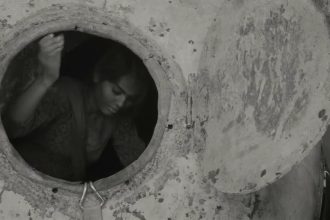Beyond Hearts and Candy: Unveiling the Actual Facts of Valentine’s Day

Every year, February 14th arrives adorned in shades of red and pink, overflowing with chocolates, cards, and romantic gestures. But amidst the commercialized cheer, have you ever wondered about the true origins of Valentine’s Day? Its actual history goes far beyond Hallmark cards and overpriced dinners, revealing a fascinating journey through time, tradition, and even controversy.
Bing Prompt
Create a realistic 3D illusion for a profile picture where a 22-year-old boy in a white hoodie is sitting casually on a Wingback Chair. Wearing sneakers and a white shirt, he looks ahead. The background features “KHULNAPEDIA” in big and capital red neon light fonts on the black wall. There should not be his shadow, and there are wings to make it appear as if he is an angel.
Ditching the Myths: From Pagan Rituals to a Saintly Enigma
Forget the sappy stories of Saint Valentine secretly marrying soldiers. The truth is shrouded in mystery, with several historical figures, and even a pagan festival, vying for the title of origin. Some believe it stems from the Roman festival of Lupercalia, a fertility celebration featuring animal sacrifices and matchmaking rituals. Others link it to a martyred priest named Valentine, whose legend varies depending on the source. While the historical details remain fuzzy, what’s clear is that the romantic association arose much later, around the 14th century, fueled by courtly love traditions and poetic exchanges.
- Advertisement -
Implications for the Present: Love Beyond the Hype
In our contemporary world, Valentine’s Day has become a multi-billion dollar industry, often criticized for its commercialization and pressure to conform. However, amidst the frenzy, its historical roots offer valuable insights:
- Love takes many forms: While romantic love dominates the spotlight, remember that Valentine’s Day can also celebrate platonic love, familial bonds, and self-love. Expand your circle of appreciation beyond romantic partners.
- Gestures matter, not grandiosity: The spirit of Valentine’s Day lies in expressing affection, not outspending yourself. A handwritten note, a shared activity, or even a simple act of kindness can hold more meaning than extravagant gifts.
- Challenge the narrative: Don’t feel pressured to participate if it doesn’t resonate with you. Use this day to celebrate love on your own terms, whether it’s spending time with loved ones, indulging in self-care, or simply reflecting on the importance of love in your life.
Remember, Valentine’s Day is not just about hearts and candy, but about recognizing the various forms of love that enrich our lives. By understanding its true history and appreciating its deeper meaning, we can celebrate love authentically and meaningfully, whether on February 14th or any other day.
Feel free to share your thoughts and experiences in the comments below! Let’s make Valentine’s Day a celebration of love in all its diverse and beautiful forms.
Beyond the Hallmark Cards: Unmasking the Actual Facts of Valentine’s Day
With hearts, chocolates, and teddy bears adorning every corner, it’s easy to get swept up in the romantic whirlwind of Valentine’s Day. But beneath the layers of pink and red lies a history far more complex and surprising than most realize. So, before you write a sonnet to your crush or book a candlelit dinner, let’s delve into the actual facts behind this ubiquitous holiday and explore its implications for our present era.
From Pagan Rituals to Saintly Legends:
Contrary to popular belief, Valentine’s Day doesn’t solely stem from a singular saint’s martyrdom. Its roots trace back to ancient Rome, where the pagan festival of Lupercalia reigned supreme. Celebrated in mid-February, this fertility festival involved animal sacrifices, purification rituals, and a matchmaking lottery where young women’s names were paired with men for a year. Centuries later, the Catholic Church attempted to Christianize the holiday by associating it with St. Valentine, whose exact story remains shrouded in mystery.
The Evolution of Love:
The association of Valentine’s Day with romantic love emerged gradually in the Middle Ages. Influenced by courtly love traditions and the belief that birds began mating on February 14th, the day became a platform for expressing affection through handwritten notes and poems. The invention of the printing press in the 19th century further fueled the exchange of mass-produced Valentine’s cards, solidifying the holiday’s association with commercialized romance.
Implications for the Present:
In today’s diverse and evolving society, the traditional narrative of Valentine’s Day faces challenges. The emphasis on heteronormative couples and extravagant spending can exclude and alienate many individuals and communities. Moreover, the pressure to conform to societal expectations of romance can contribute to feelings of isolation and inadequacy.
Redefining Love in the Modern Age:
So, what does this mean for Valentine’s Day in the present era? Perhaps it’s time to redefine the holiday to celebrate love in its various forms:
- Embrace inclusivity: Celebrate platonic love with friends and family, acknowledge the diverse expressions of love within the LGBTQ+ community, and appreciate the love we have for ourselves.
- Focus on experiences: Move beyond material gestures and prioritize meaningful moments of connection with loved ones, whether it’s a shared activity, a heartfelt conversation, or simply spending quality time together.
- Challenge unrealistic expectations: Let go of societal pressures and celebrate love authentically, regardless of relationship status or financial constraints.
Remember: Valentine’s Day, at its core, is about expressing love and appreciation. Let’s move beyond the commercialized facade and reclaim the holiday for what it truly represents: celebrating the diverse tapestry of love that enriches our lives.
What are your thoughts on the actual facts of Valentine’s Day? How do you plan to celebrate love in the present era? Share your ideas in the comments below!








